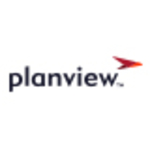What is our primary use case?
We use PPM for strategic portfolio management across our entire organization, and for managing all of our strategic projects.
We're on the latest release of 15.3, and so far it's performing great. It's meeting all our needs.
How has it helped my organization?
The benefits are that it creates visibility across our whole organization. People that were often left in the dark wondering what was happening with projects. Now have an easy solution to see all the information they want to see across the whole portfolio.
It's definitely improving our ability to make better decisions, and improving the quality of data that we have, to make the decisions for the strategic good of the company.
What is most valuable?
- Flexibility
- Easy user adoption
Those are valuable because the tool should be an enabler and not a barrier to people getting their work done.
What needs improvement?
Ultimately, I would like to see them keep moving in the direction that they are, and get everything over into the new UX, to modernized portfolio management; To get all of the project management capabilities moved over into the new UX.
Also, they should continue to listen to their customers for influence and feedback.
I wish patches would be quicker since we're a SaaS customer, and just be a non-event, so we don't have to go through a whole - essentially - upgrade cycle, just to do a patch. As a SaaS customer, I'd like the patch to just happen.
For how long have I used the solution?
More than five years.
What do I think about the stability of the solution?
We're a SaaS customer, so stability has been pretty much in line with our expectations.
What do I think about the scalability of the solution?
Scalability has been good. We initially rolled it out just for IT, but it's been growing to other areas of our organization. So it's proven to be quite scalable for us.
How are customer service and technical support?
Technical support has been helpful for us, in particular with the second-level support engineers. They've been very helpful. When we have problems, they're not typically the simple end-users problems that can be solved by front-line support, so the second-level support engineers have been very helpful for us. They are responsive.
Which solution did I use previously and why did I switch?
We were running all manual processes, and using Excel spreadsheets, and investing far too much manual effort to try and run a process.
One of the main drivers in our choosing CA was that it was one of the recognized industry leaders. Also, we had an existing relationship with CA from other work that we had done with them in the past.
How was the initial setup?
It was a long time ago. It went well. It was challenging because we thought we knew everything we wanted to get out of the tool, but we didn't know what we didn't know. So there are a lot of things, now, that we would have gone back and done differently, and made a lot simpler in the beginning.
Upgrades have gotten better each time. We just, a month ago, upgraded from 15.1 to 15.3. It's been the smoothest upgrade that we've ever done. Past upgrades, we certainly had some challenges, especially going from 14 to 15 or 13 to 14, but they've gotten better each time.
Last time, when we upgraded to 15.1, we had some challenges around Jaspersoft, and also some issues with supporting some of the complex process work flows that we had designed internally, that were affected by some changes in the process engine. But recently, with this most recent upgrade to 15.3 there were really no problems to speak of.
Which other solutions did I evaluate?
We looked at CA and we also looked at Planview and HPE.
What other advice do I have?
The new UX is great because it has helped remove some of those barriers, so that people who are not classically trained project managers can easily get up to speed in using the tool without having to learn a whole other tool set. It's very intuitive, and very collaborative, and very easy to adapt to their existing work styles.
Regarding choosing a vendor, for us the vendors need to understand how we do business, and understand our unique needs and requirements, and be responsive.
Start simple. We tried to do too much in the beginning. Just start simple and grow into the tool.
Disclosure: My company does not have a business relationship with this vendor other than being a customer.
















